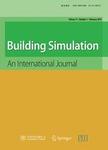Utilizing interpretable stacking ensemble learning and NSGA-Ⅲ for the prediction and optimisation of building photo-thermal environment and energy consumption
作者机构:School of ArtsJiangsu UniversityZhenjiang212013China School of Architecture and Urban PlanningNanjing UniversityNanjing210093China School of Computer Science and Communication EngineeringJiangsu UniversityZhenjiang212013China
出 版 物:《Building Simulation》 (建筑模拟(英文))
年 卷 期:2024年第17卷第5期
页 面:819-838页
核心收录:
学科分类:0830[工学-环境科学与工程(可授工学、理学、农学学位)] 0907[农学-林学] 08[工学] 081304[工学-建筑技术科学] 0813[工学-建筑学] 0814[工学-土木工程] 0811[工学-控制科学与工程] 0812[工学-计算机科学与技术(可授工学、理学学位)] 0713[理学-生态学]
基 金:funded by the Postgraduate Research&Practice Innovation Program of Jiangsu Province(SJCX23-2117)
主 题:building ecological performance ensemble learning multi-objective optimisation sustainable design explainable machine learning
摘 要:This study develops an approach consisting of a stacking model integrated with a multi-objective optimisation algorithm aimed at predicting and optimising the ecological performance of *** integrated model consists of five base models and a meta-model,which significantly improves the prediction ***,the R2 value was improved by 9.19% and the error metrics MAE,MSE,MAPE,and CVRMSE were reduced by 69.47%,79.88%,67.32%,and 57.02%,respectively,compared to the single prediction *** to the research on interpretable machine learning,adding the SHAP value gives us a deeper understanding of the impact of each architectural design parameter on the *** the multi-objective optimisation part,we used the NSGA-Ⅲ algorithm to successfully improve the energy efficiency,daylight utilisation and thermal comfort of the ***,the optimal design solution reduces the energy use intensity by 31.6 kWh/m^(2),improves the useful daylight index by 39%,and modulated the thermal comfort index,resulting in a decrement of 0.69℃ for the summer season and an enhancement of 0.64℃ for the winter season,***,this study provides building designers and decision makers with a tool to make better design decisions at an early stage to achieve a better combination of energy efficiency,daylight utilisation and thermal comfort optimisation in an integrated manner,providing an important support for achieving sustainable building design.



